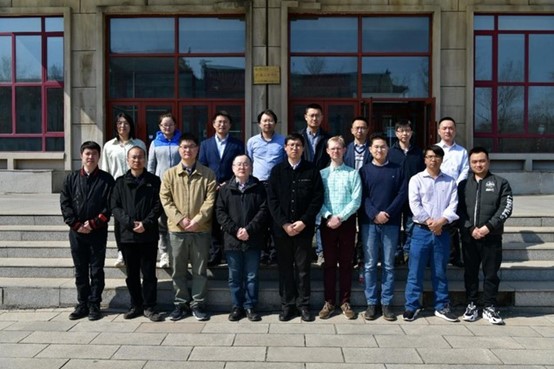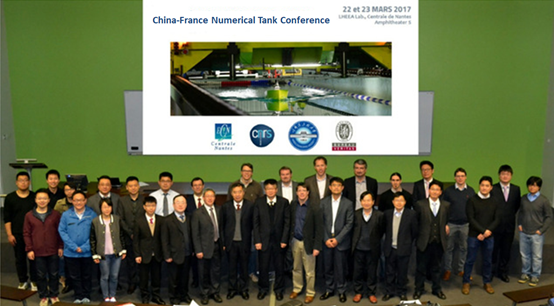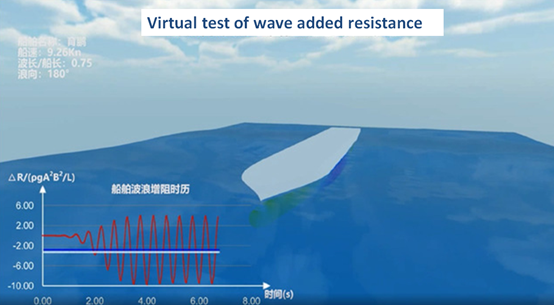1. Team Introduction
The academic team of Fluid Mechanics "Xinghai" has a good historical heritage and research foundation. Since the 1970s, the old generation of hydrodynamic experts, such as Prof. Dai Yishan, Prof. He Wuzhou, and Prof. Huang Debo, etc., have done pioneering work in the hydrodynamics of ships in China. In the past 20 years, in response to the development needs of ship and ocean engineering equipment and high-performance ships, the team, under the leadership of Prof. Duan Wenyang, has carried out theoretical research on the hydrodynamic performance of ships and marine structures and applied research, and achieved many innovative research results, which have supported the cultivation of high-level talents and the national demand for research and development of ship and marine equipment. In the past five years, the team has won three second prizes of Provincial Science and Technology Progress Award, one third prize of National Defense Science and Technology Progress Award, one second prize of National Teaching Achievement Award, one first prize and one second prize of Provincial Higher Education Teaching Achievement Award, one first-class undergraduate course at the national level, one demonstration course for higher education courses on ideology and politics, one provincial postgraduate high-quality program and one provincial "Head Goose" team and many other honors.
The team now has a faculty of 17 members, including 8 professors and 5 associate professors.

2. Research Foundation
In the area of hydrodynamic performance analysis of ships and ocean floats, the team has developed several sets of solvers and industrial software based on computational fluid dynamics theories, and owns thousands of cores of high-performance computing platforms and parallel computing software environments. The team has developed the ship model towing tank, offshore model test basin, internal wave basin, as well as the corresponding supporting equipment and instruments, which can carry out various hydrodynamic performance tests of high-performance ships/offshore platforms and provide a good research infrastructure for scientific research.
The team has been collaborating with many research institutes and shipyards such as CSIC 701, 702, 708, SSI, 627, Dalian Shipyard, Shanghai shipyard, etc., as well as CCS, BV, DNV classification societies, and also with famous universities.
The team has outstanding internationalization characteristics, relying on the "Frontier Science Center for Extreme Ocean Fluctuation Fields" of the Ministry of Education and the "International Joint Research Center for Naval Architecture and Ocean Engineering Mechanics" of the Ministry of Science and Technology, and has established a good academic relationship with the Norwegian University of Science and Technology, the University of Lisbon, the Polytechnic University of Marseille of France, City University of London, Ecole Centrale de Nantes, and the BV classification society of France and other internationally renowned universities and research institutes, and has deepened its cooperation on the joint education of postgraduates, which has helped the postgraduate students to broaden the international horizons, and to enhance the capacity of scientific research and innovation.

3. Landmark achievements
The team has established the Taylor Expanded Boundary Element Theory and developed the potential flow based numerical tank solver TEBEM, which can accurately and efficiently calculate the ship wave added resistance, and has been applied to the design of the 3 major ship types in China; the team has created the high-precision laminar water wave theory, which solves the constraints of the digital ocean and the ship's intelligent navigation on the nonlinear wave simulation of the marine environment, and achieves the highest level of international water wave simulation. The team also developed the numerical pool viscous flow core solver CGCFD, which has been applied to the design of China's seventh-generation deep-water semi-submersible platform; developed the numerical pool test system V1.0 (www.numericaltank.com), which provides with numerical test cloud services of ships and ocean engineering for the optimization of ship design; the numerical tank innovation special project (Phase I) has been applied to 3 major mainstream ships. The solvers and methods developed by the team have been applied to the design of the three mainstream ship types and the development of new ship types, used in the design of more than 10 ships ordered by Shanghai Shipbuilding Research and Design Institute (SSRDI), which has also contributed to the formulation of the regulations of China Classification Society (CCS), and the design of floating breakwaters of South China Sea islands and reefs; it has provided China's proposal for the IMO Minimum Propulsive Power Evaluation Guidelines.
The team has undertaken 46 national, provincial and ministerial scientific research projects funded by the Ministry of Science and Technology, the National Natural Science Foundation of China, the Ministry of Industry and Information Technology, the Science and Technology Commission of the Military Commission, the General Armaments Department, the Naval Armaments Department, and the relevant scientific research institutes and production units in the industry, and the team has undertaken 160 million yuan of project funding. Among them, there are 1 national major innovation special project, 2 high-tech ship research projects funded by the Ministry of Industry and Information Technology, and 17 key/international (regional) cooperation and exchange projects/facial/youth projects of the National Natural Science Foundation of China. In the past 5 years, the team has published more than 100 papers in Chinese and international journals such as Journal of Fluid Mechanics, Physics of Fluids, Journal of Computational Physics, Ocean Engineering, etc., including more than 50 SCI papers. The team has published 2 academic monographs. The team has obtained more than 20 authorized patents, and won 3 provincial and ministerial-level scientific and technological awards. The course "Wave Theory", given by the team, was elected as brand undergraduate course in 2018; the course "Principles of Ship and Ocean Engineering" was elected as first-class undergraduate construction course in 2021; the course "Ideal Fluid Mechanics" was named postgraduate selective course of Heilongjiang province in 2022; the textbooks of "Principles of Ship and Ocean Engineering Principles of Ship and Ocean Engineering" and "Ship and Ocean Engineering Fluid Mechanics" are listed as "14th Five-Year Plan" texbooks of the Ministry of Industry and Information Technology.

4. Team Culture
In order to help with the career of young teachers and researchers, the team has created a system of openness, collaboration, sharing and fairness, and provided a friendly and flexible working environment.
The team attaches great importance to the cultivation of young talent, and strives to build a "stage" for young members to achieve a better career.
